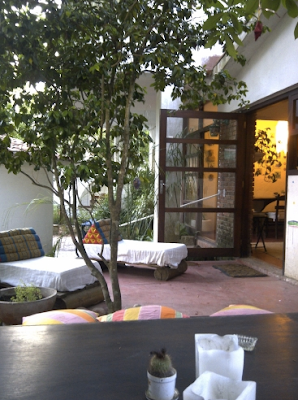 |
| Spot the difference - Puente de la Mujer in Buenos Aires (top) and the Samuel Beckett bridge in Dublin (bottom) |
I've lapped up my last bit of sunshine, nuzzled down a final few steaks at the likes of La Cabrera, had my last few bites of South American sushi at Sipan Palermitano and I'm about to spend my last night as a resident of beautiful Palermo Hollywood. It's fair to say I'll miss this place, so here's a little list of just a few of the things I'm sad to say goodbye to...
1. Steak (bife de chorizo, bife de lomo, La Cabrera, Miranda, El Obrero, to name but a few)
2. Sushi (Osaka, Tô, Sipan, Green Eat)
3. Sunshine (sunrise, sunset, scorching heat, all day, every day...)
4. Speakeasy bars (Frank's, 878, Oasis Clubhouse... shame I didn't get to sample more of them)
5. Street art (Dorrego area, Palermo Hollywood)
6. Wine (Malbec, Mendoza...)
7. Havanna (coffee, alfajores, Havannets...)
8. Running in the Bosques de Palermo (lazy Palermo Sundays, the Buenos Aires marathon, 10k runs in the park)
9. Shopping in Palermo Soho (too many places to name, and all way too expensive...)
10. Brunch (Oui Oui, Miranda, Olsen)
 |
| Steak. Just one of the many things I'll miss |
And a few things I won't...
1. The subte (people attempting to pickpocket me on the subte/ getting squashed into someone's sweaty armpit on the subte/ the subte breaking down and not letting me off)
2. Getting lost (in the rain/ on the wrong side of the train tracks/ on streets with no street signs)
3. The oppressive heat of my apartment with its tragic lack of air conditioning (the only relief being the ceiling fan that looks so decrepit I have to sleep with one eye open to avoid getting my head chopped off mid-slumber)
4. Getting hissed and panted at by pervy businessmen and pervy workmen (on the way to work/ on the subte/ at conferences/ in interviews...)
5. Going out late (and eating dinner no earlier than 11pm/ not being able to go to a bar before 3am/ being out past 12 on a school night). Roll on 6pm dinners and 11pm pub closes!
Yep, this is it. Buenos Aires, I'll miss you.










































